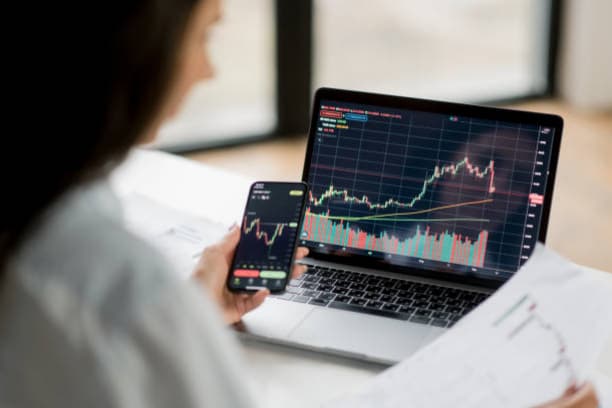With the rapid development of cryptocurrencies and fintech, thePython Quantitative TradingIt's a hot topic that's getting more and more attention. It not only lowers the threshold of trading, but also allows investors to utilize data and programmed strategies for more precise trading. In this article, I will take you step by step to learn how to trade quantitatively with Python from scratch, including the core concepts, tools to use and real-world strategies to help you get to the next level in your investment journey. If you are interested in trade backtesting, algorithmic execution, and automation, this article is a must-read for you!

What is Quantitative Trading? Why Python?
quantitative tradingThe term refers to the use of data analysis and programmed trading strategies to execute buy and sell decisions, replacing the traditional intuitive approach to trading. This approach reduces human emotion and allows for quick reaction to market fluctuations.
SelectionPythonas a quantitative trading tool because of its strong community support, rich financial database, and efficient development framework, such as thepandas,NumPyrespond in singingbacktraderThese tools allow beginners to quickly get started with data analysis, strategy design, and simulation backtesting.
Who is quantitative trading suitable for? If you have a basic knowledge of programs, an interest in the workings of the financial markets, and a desire for more efficient money management, quantitative trading is for you.
Creating a development environment for quantitative trading
Preparation: Before entering the real world, you first need a suitable development environment. Here are the steps to set it up:
- Installing PythonFromPython Official SiteDownload and install the latest version (3.8+ recommended).
- Configuring the Virtual Environment: Use
venvmaybecondaTo isolate project environments and avoid library conflicts between different projects. - Installation of the necessary libraries: Install the following common tools:
pip install pandas numpy matplotlib backtrader
- Select IDE: Recommended Use
Jupyter NotebookFor interactive coding, you can also choose toPyCharmmaybeVS CodeThe
tip: Using Google Colab also eliminates the hassle of local configuration, which is suitable for newbies to try.
Basic data analysis and processing
Before you trade quantitatively, it's critical to have the data you need.pandasrespond in singingNumPyIt is a great tool for working with financial data. Here are some common operations:
- Obtaining Historical Data::
utilizationyfinanceThe library grabs stock or cryptocurrency data from Yahoo Finance:
import yfinance as yf
data = yf.download('BTC-USD', start='2022-01-01', end='2023-01-01')
print(data.head())
- Data Cleaning: Removes null values and handles missing data:
data = data.dropna()
- Data Visualization: Use of
matplotlibPlot price trends:
import matplotlib.pyplot as plt
data['Close'].plot(title='Bitcoin Price')
plt.show()
Designing your trading strategy
The core of quantitative trading isStrategy DesignThe following are a few common entry strategies. Here are a few common strategies for getting started:
1. Moving average crossover strategy::
Simple and classic, using short-term and long-term averages to cross to determine buying and selling opportunities:
data['SMA50'] = data['Close'].rolling(window=50).mean()
data['SMA200'] = data['Close'].rolling(window=200).mean()
data['Signal'] = (data['SMA50'] > data['SMA200']).astype(int)
2. kinetic strategy::
Determine the change in momentum of an asset over a period of time to capture short-term trends.
3. Mean reversion strategy::
Assuming that the price will revert to the mean, a reverse operation is performed when the price deviates.
Conducting backtests: Validating your strategy
Backtesting is a very important step before committing to a live program.backtraderIt is a professional testing framework:
import backtrader as bt
class SMACross(bt.SignalStrategy):: __init__(self): __init__(self): __init__(self).
def __init__(self).
sma1 = bt.ind.SMA(period=50)
sma2 = bt.ind.SMA(period=200)
self.signal_add(bt.SIGNAL_LONG, sma1 > sma2)
cerebro = bt.Cerebro()
cerebro.addstrategy(SMACross)
data = bt.feeds.PandasData(dataname=data)
cerebro.adddata(data)
cerebro.run()
cerebro.plot()
Through backtesting, you can understand how your strategy has performed in historical data, and then adjust the parameters to improve the stability of your strategy.
Automated trading
When the strategy has been backtested, it can beAutomated Trading. UseccxtThe library can be connected to multiple exchanges:
import ccxt
exchange = ccxt.binance({
'apiKey': 'Your API Key',
'secret': 'Your API Secret', {
})
order = exchange.create_market_buy_order('BTC/USDT', 0.01)
print(order)
Please note that real trading involves capital risk and it is important to test and monitor the program's performance.
Frequently Asked Questions Q&A
1. Do beginners need financial literacy?
Not necessarily. At the heart of quantitative trading is data analysis and programming. But understanding the basics of how the market works will help you get started faster.
2. What computer configuration is required for quantitative trading with Python?
Normal laptops are sufficient, but for large-scale data testing, server resources may be required.
3. how to find suitable data sources?
You can use the freeyfinanceOr paid APIs such as Alpha Vantage, CoinGecko, etc. Just choose according to your needs.
I hope this article can help you quickly understand the basics of quantitative trading in Python and start your quantitative investment journey!














